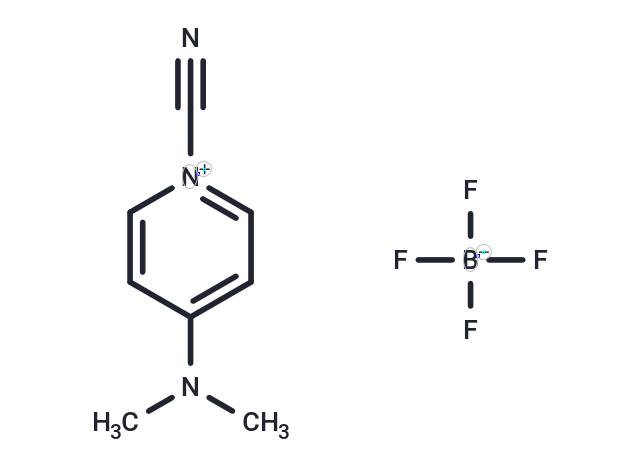Shopping Cart
Remove All Your shopping cart is currently empty
Your shopping cart is currently empty
CDAP is a cyanation reagent commonly used to modify protein thiols, and it can also be used to prepare protein-polysaccharide conjugates and activate polysaccharides in vaccine preparation.

| Pack Size | Price | USA Warehouse | Global Warehouse | Quantity |
|---|---|---|---|---|
| 100 mg | $30 | - | In Stock | |
| 200 mg | $42 | - | In Stock |
| Description | CDAP is a cyanation reagent commonly used to modify protein thiols, and it can also be used to prepare protein-polysaccharide conjugates and activate polysaccharides in vaccine preparation. |
| In vitro | The organic cyanating agent 1-cyano-4-dimethylaminopyridinium tetrafluoroborate (CDAP) can be used to activate polysaccharides in water, which can then be reacted with hexamethylenediamine to prepare protein-polysaccharide conjugates. CDAP can be used to activate polysaccharides of different chemical natures, including dextran and pneumococcal types 6, 14, 19, and 23. [1] |
| Synonyms | 1-Cyano-4-dimethylaminopyridinium tetrafluoroborate |
| Molecular Weight | 234.99 |
| Formula | C8H10BF4N3 |
| Cas No. | 59016-56-7 |
| Smiles | N#C[N+]1=CC=C(N(C)C)C=C1.F[B-](F)(F)F |
| Color | White |
| Appearance | Solid |
| Storage | store at 4°C | |||||||||||||||||||||||||||||||||||
| Solubility Information | DMSO: 80 mg/mL (340.44 mM), Sonication is recommended. | |||||||||||||||||||||||||||||||||||
Solution Preparation Table | ||||||||||||||||||||||||||||||||||||
DMSO
| ||||||||||||||||||||||||||||||||||||
| Size | Quantity | Unit Price | Amount | Operation |
|---|

Copyright © 2015-2025 TargetMol Chemicals Inc. All Rights Reserved.